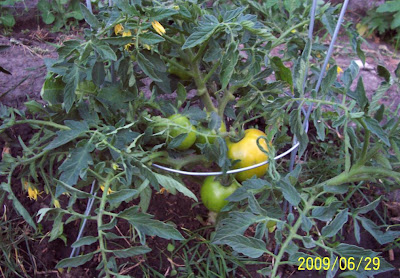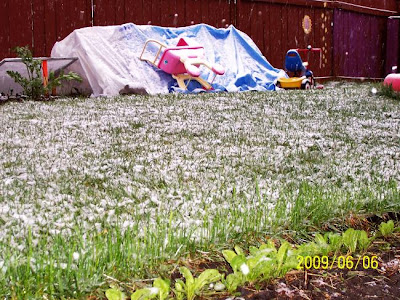
The spinach has bolted (as of June 27)! Thanks to unusually hot and dry June weather. June is typically rainy and cool in Calgary (last few years at least). I read (after the bolting) that placing mulch on the soil around the spinach can help reduce bolting (keeps soil cooler during hot afternoons). I added some grass clippings to see if this might slow the bolting, though likely too late now to measure the effect.
Some varieties of spinach (such as
Tyee) are not supposed to bolt as easily. This
Bloomsdale Spinach variety has bolted after about two weeks of harvesting. Good reminder to plant a variety of crops since the weather is unpredictable from year to year! However, we have still harvested a generous quantity to date, including freezing some. We'll see how much more we get.
 This post title should perhaps more accurately be: Name that Volunteer Plant! Don't be confused by the raspberry and rhubarb behind... (I don't know the answer so can't offer any hints, sorry).
This post title should perhaps more accurately be: Name that Volunteer Plant! Don't be confused by the raspberry and rhubarb behind... (I don't know the answer so can't offer any hints, sorry).















